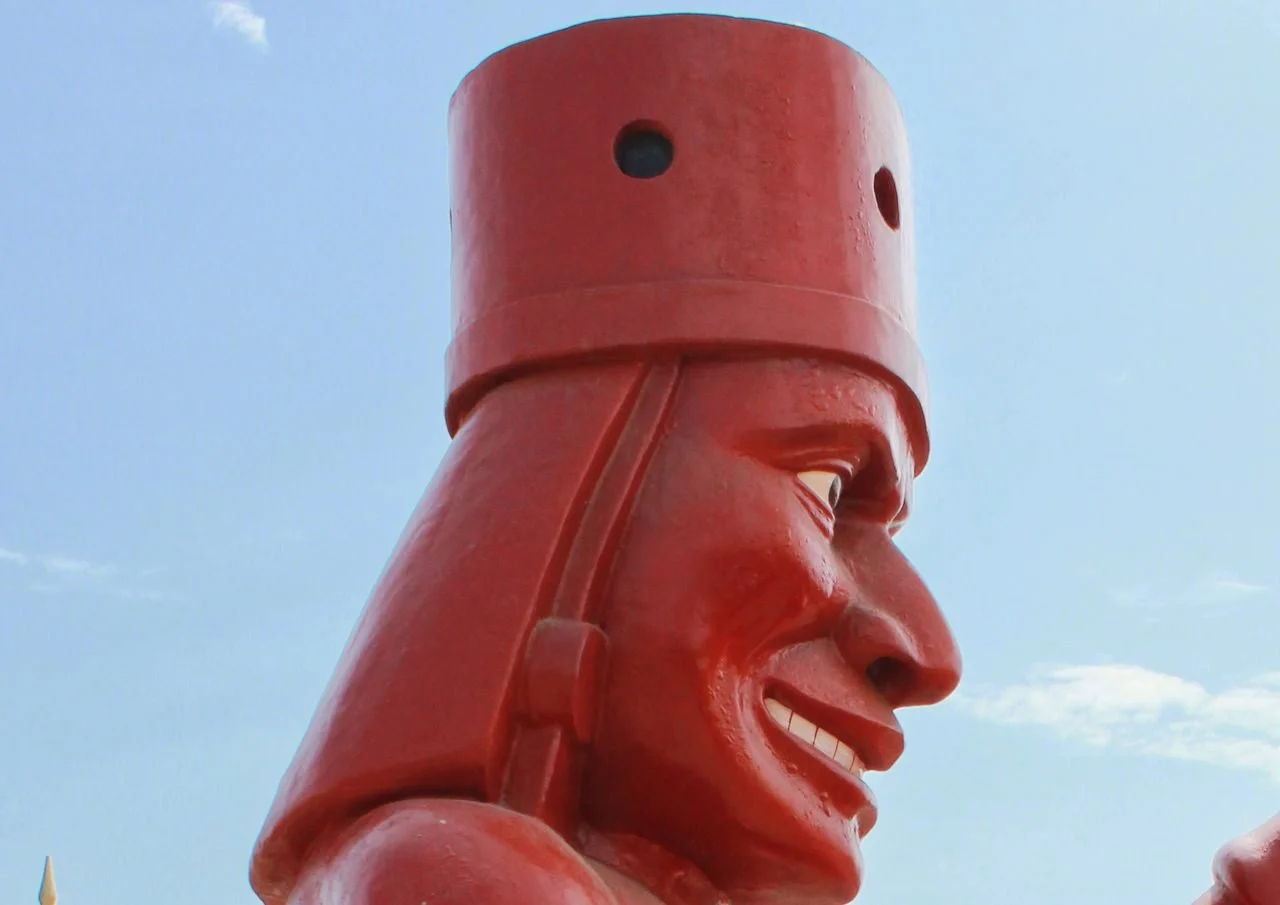Photo: Liliana Michelena for Atlas Obscura
There is no right or wrong way to interact with the 11-foot-tall statue of a grinning man with an enormous phallus recently erected outside Trujillo, the biggest city on Peru’s north coast.
Along a narrow strip next to a two-way road that connects the city to the ancient pyramids of the Huacas del Sol y la Luna, children and adults wander around tentatively. They exchange complicit gazes with other amused visitors, gathering courage to step in for their selfie. Once they do, it is a very short road from the timid snap under the ample shade to the reckless swinging from the circumcised member.
The crimson fiberglass structure responsible for such scenes of liberation is the scaled-up version of a ceramic vessel from pre-Hispanic Moche culture, whose people lived in the region between 150 and 700. The “Mochica,” as they were sometimes called, were expert ceramists. Famous among their huacos—as ancient pottery is known in Peru—are portrayals of massive penises, masturbation, and various forms of intercourse. These artworks have long lived in museums and history books as representations of fertility and life. But seeing the imposing landmark caused commotion in a country where the Catholic church still exerts major influence on public policy. For example, consider the halted implementation of comprehensive sex education in the national school curriculum. While not a proper replacement for formal education, the statue has become a conversation starter for lessons denied elsewhere.
“It’s not a sin anymore to talk to our kids about these things because we’re talking about themselves, their own bodies,” said Graciela Zamora, a local resident, moments after kissing the penis while taking a photo with her pre-teen children. The huaco’s security guard, often called upon by visitors to take their family portraits, said “none of this can be offensive, because it is our culture.”
There was not as much consensus six months ago, in January 2022, when the appearance of the giant huaco—installed by the district municipality of Moche to revitalize the area—challenged notions of good taste and modesty. The nudity and disproportionate virility scandalized the more conservative in the country who said such representations were okay for museums, but inappropriate in public. Most opponents spouted their “think about the children” rhetoric over social media, and a local priest urged his parishioners to “disapprove this [artistic] expression by not showing up.” But people kept arriving in caravans of cars that often blocked traffic as delighted families admired the size of the new member of the town.
That is, until someone resorted to violence.
Continue reading at Atlas Obscura.
